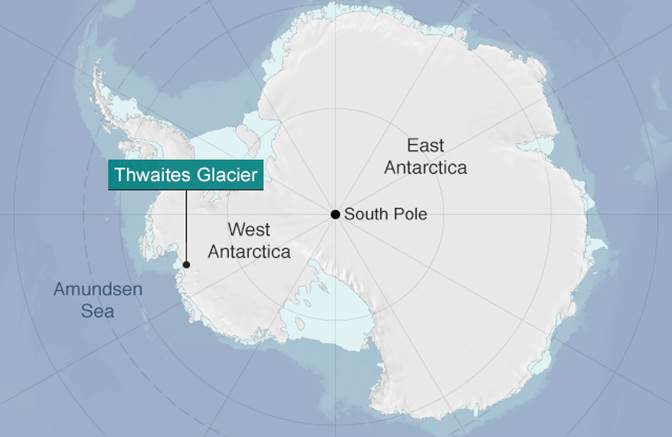THWAITES GLACIER

Copyright infringement not intended
In News
- A report published in ‘Nature Geoscience’ magazine highlighted that the amount of ice lost from Antarctica’s Thwaites Glacier “doomsday glacier” has doubled in the last 30 years.
- The rapid retreat of the glacier will raise global sea levels by 3-10 feet and put coastal areas and communities at risk.
- According to the United States National Aeronautics and Space Administration; the Thwaites glacier is melting from the bottom due to contact with warm water. This increased the risk of glacier collapse within the next few decades.
- Researchers measure the retreat using satellite observations from the last 40 years.
- Researchers from the United States, United Kingdom and Sweden imaged the seabed on which the glacier rested between 200 years and the present day.
- Imaging the seabed gave the team a glimpse of what the glacier looked like in the pre-satellite era.
- The former grounding line on the seabed has geological features called ribs. They are tens of centimetres high and several metres wide.
Related News
- Researchers at NASA’s Jet Propulsion Laboratory (JPL) have found that Antarctica’s coastal glaciers are losing icebergs more rapidly than nature can replenish the crumbling ice.
- The study was published in the journal Nature.
- According to the study, thinning and calving have reduced the mass of Antarctica’s ice shelves by 12 trillion tons since 1997.
- The net loss of the continent’s ice sheet from calving alone in the past 25 years was nearly 37,000 sq km (14,300 sq miles), an area almost the size of Switzerland.
- The study has raised concerns about how fast climate change is depleting Antarctica’s ice shelves and accelerating the rise of global sea levels.




1.png)
